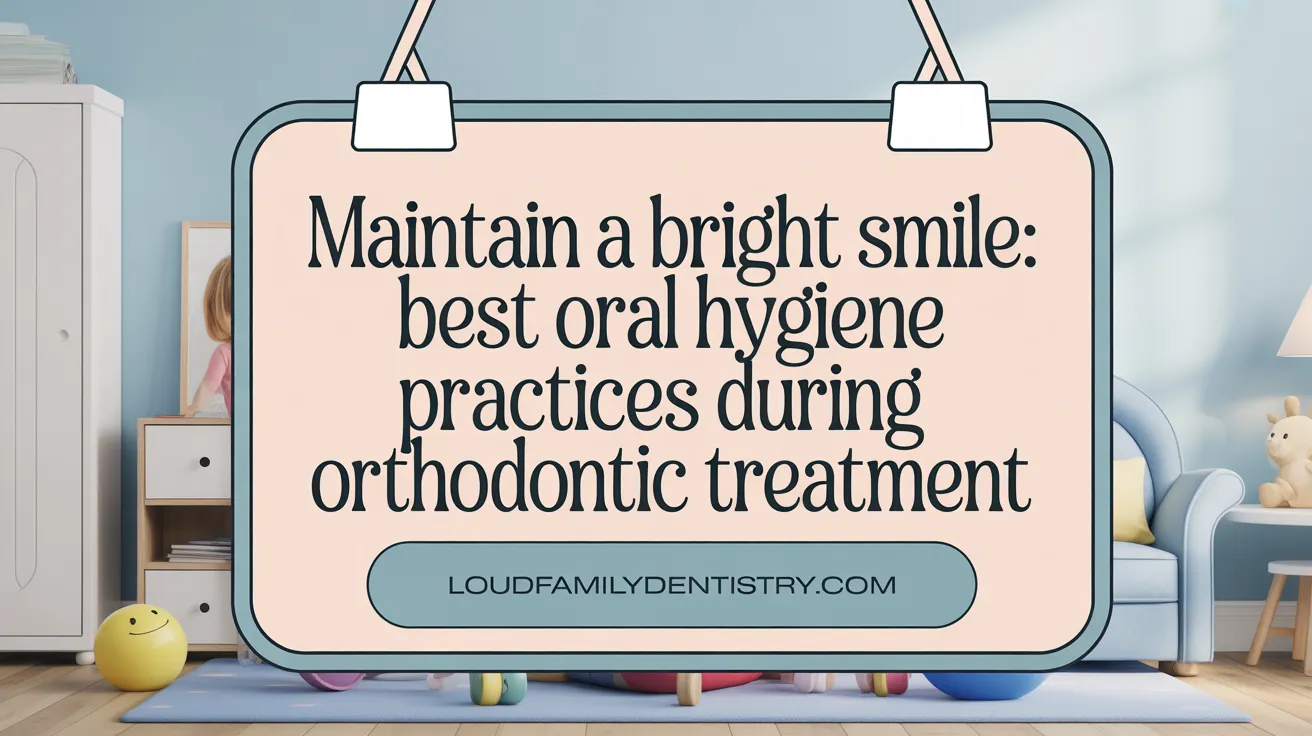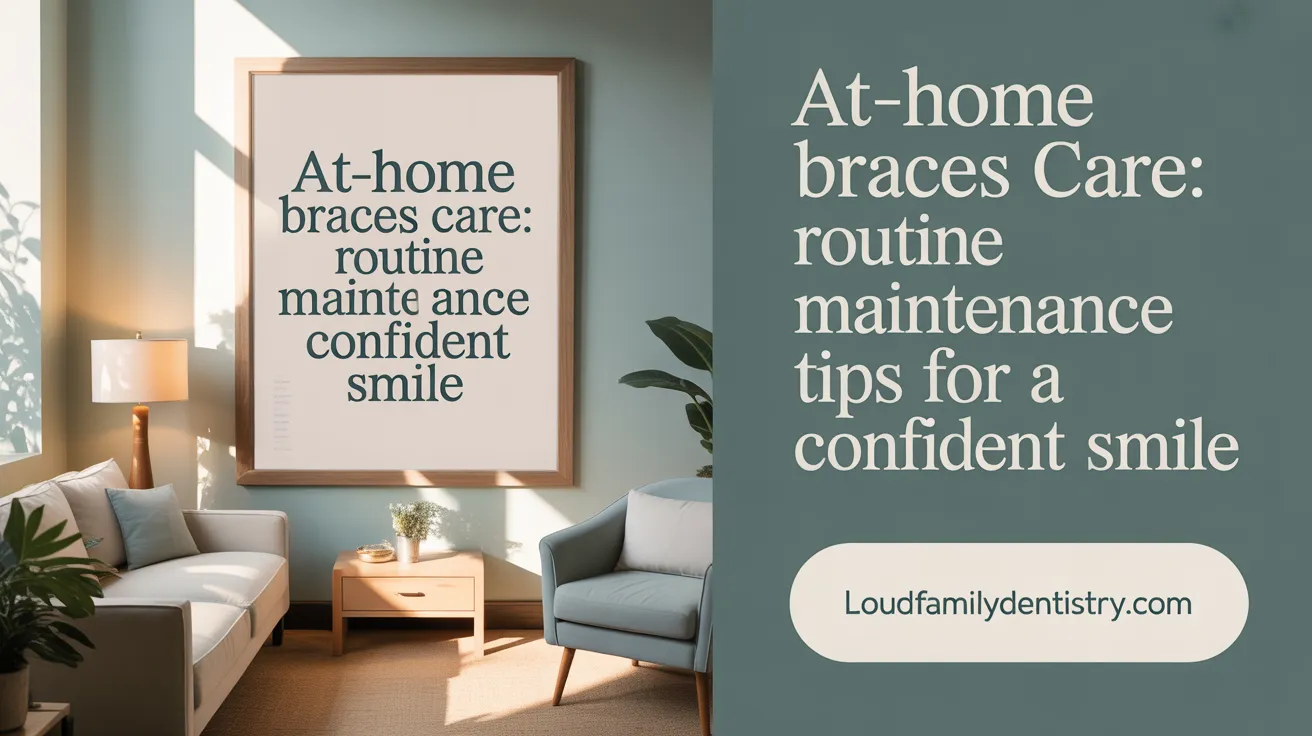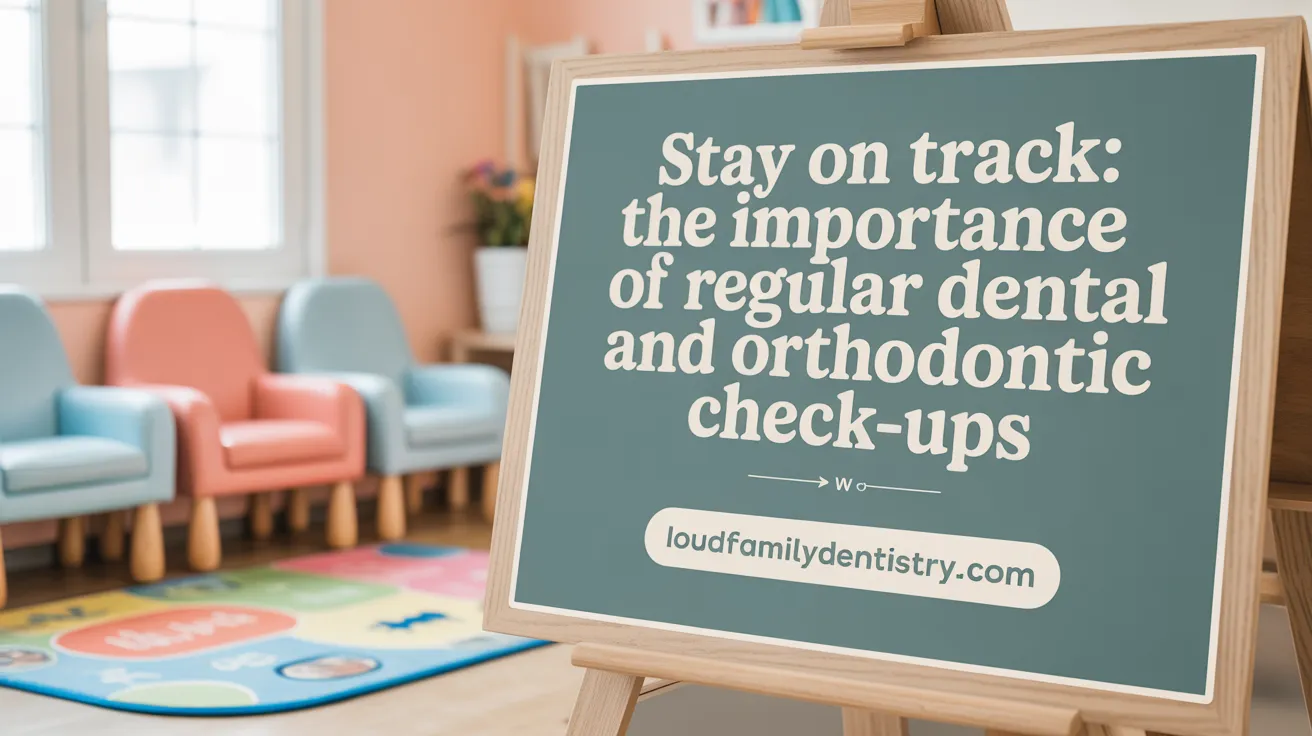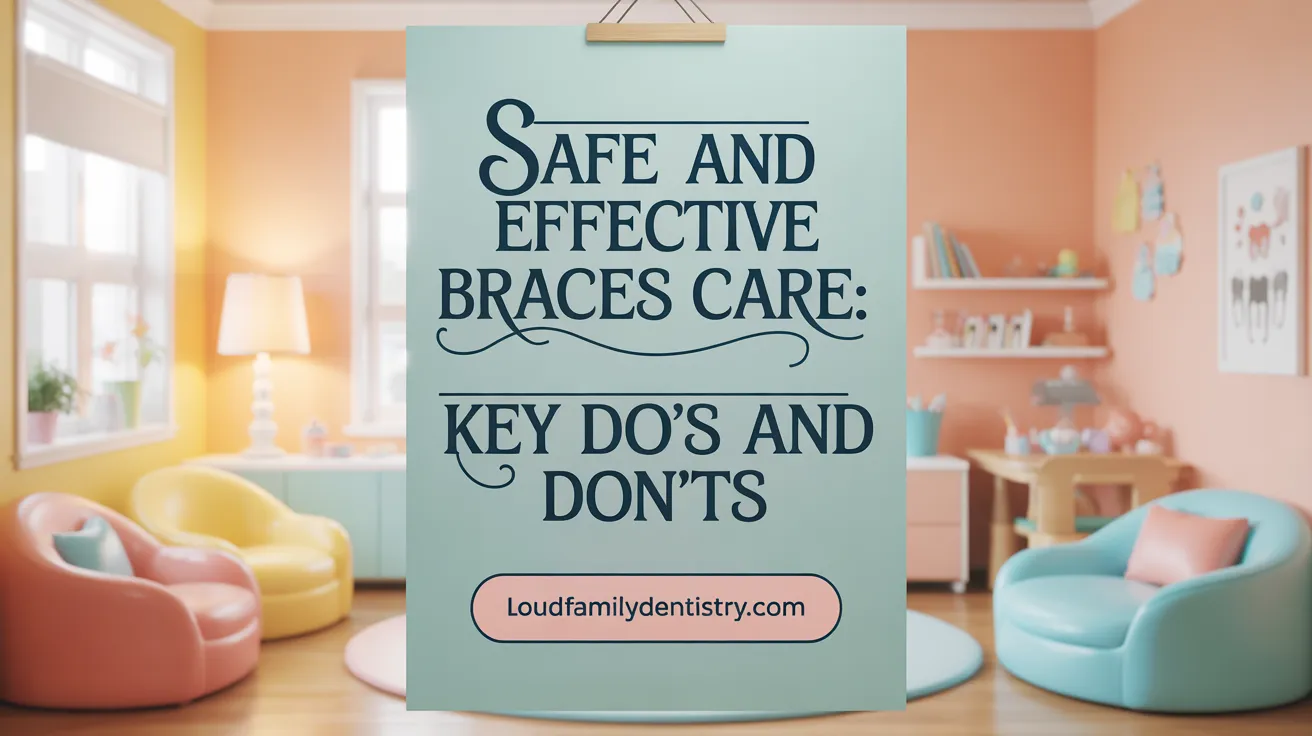Understanding the Commitment to Braces Care
Caring for braces is an essential part of orthodontic treatment, crucial not only for achieving a beautiful smile but also for maintaining excellent oral health. This article provides comprehensive best practices for managing your braces effectively, from daily oral hygiene routines to dietary recommendations and handling minor emergencies, ensuring your treatment progresses smoothly and comfortably.
Optimal Oral Hygiene Practices During Orthodontic Treatment

What are the best oral hygiene practices to maintain oral health during orthodontic treatment?
Maintaining excellent oral hygiene is vital for anyone with braces or aligners to prevent tooth decay, gum disease, and white spots on teeth caused by plaque buildup.
A thorough cleaning routine should be followed after every meal. Use a soft-bristled toothbrush or an orthodontic-specific brush, holding it at a 45-degree angle to the gum line. Gently brush all surfaces of your teeth, especially around brackets and wires, for at least two minutes. Electric toothbrushes with special orthodontic heads can also be effective.
Flossing is equally important and should be done daily. Use floss threaders, interdental brushes, or water flossers to carefully remove plaque and food debris from between teeth and around brackets. Thread the floss under the arch wire gently, avoiding snapping or forcing it.
In addition, incorporating adjunct tools such as antimicrobial or fluoride mouth rinses can help eliminate bacteria, strengthen enamel, and breathe fresh. Using a tongue scraper can further reduce bacteria in the mouth.
Routine professional dental cleanings every six months are necessary to monitor oral health, remove stubborn plaque, and address any potential problems early. Regular visits for adjustments also enhance overall treatment success.
In summary, consistent brushing, effective flossing, use of supportive oral hygiene tools, and professional care form the foundation of optimal oral health during orthodontic treatment.
Effective At-Home Braces Care and Routine Maintenance

How should braces be properly cared for at home?
Proper care for braces at home involves a consistent and thorough oral hygiene routine. Patients should brush their teeth after every meal and before bed, using a soft-bristled toothbrush and fluoride toothpaste. It’s especially important to brush around brackets and wires, which can trap food and plaque.
In addition to brushing, daily flossing is essential. Using tools like floss threaders or interdental brushes can help remove debris that toothbrushes might miss. Flossing helps prevent plaque buildup, cavities, and gum disease.
Diet plays a significant role in maintaining braces. Patients should stick to soft foods—such as soups, stews, pasta, smoothies, and scrambled eggs—while avoiding sticky, hard, or crunchy foods like caramel, popcorn, nuts, and raw vegetables. Cutting larger foods into smaller, manageable pieces also helps prevent damage.
Regular check-ups with the orthodontist are vital to monitor progress and address any issues promptly. If brackets or wires become loose or broken, contacting the orthodontist immediately ensures proper repairs and prevents further damage.
Protective measures are necessary during physical activities. Wearing a mouthguard helps prevent injuries that could damage braces or teeth. Following specific at-home care instructions provided by the orthodontist can help prevent staining, cavities, and other oral health problems during treatment.
Dietary Recommendations While Wearing Braces
What diet recommendations should be followed while wearing braces?
When you’re wearing braces, choosing the right foods is essential to protect your orthodontic appliances and maintain good oral health. Hard, sticky, chewy, or crunchy foods can damage brackets and wires or get stuck in your braces, making cleaning more difficult.
Avoid foods like popcorn, caramel, nuts, hard candies, chewy gums, and raw vegetables like carrots—unless they are cut into small, manageable pieces. Instead, focus on a soft diet that includes things such as yogurt, mashed potatoes, soups, stewed vegetables, scrambled eggs, pasta, and soft fruits like bananas and applesauce. These foods are gentle on your braces and help prevent unnecessary damage.
Cutting foods into smaller pieces is a simple strategy to prevent breakage and food impaction. For example, slice apples, carrots, and corn on the cob into small, bite-sized servings.
Foods to avoid with braces
| Food Type | Examples | Why to Avoid |
|---|---|---|
| Hard foods | Raw carrots, hard candies, nuts | Can break brackets or wires |
| Sticky foods | Caramel, chewing gum, taffy | Can stick to braces, causing damage and plaque buildup |
| Crunchy foods | Pretzels, popcorn, chips | May get lodged and damage the braces |
| Chewy foods | Bagels, tough meats | Hard to chew and could pull brackets off |
Food preparation tips
- Cook vegetables until soft or steam them to make them easier to chew.
- Cut fruits and vegetables into small pieces.
- Use a fork or spoon to eat foods that require biting into hard items.
- Avoid biting directly into tough foods, instead, use your utensils.
Effects of sugary and acidic drinks
Sugary and acidic beverages like soda, sports drinks, and fruit juices can increase the risk of tooth decay during orthodontic treatment. These drinks can cause plaque buildup around brackets and contribute to white spots or staining on teeth.
Minimize their consumption and opt for healthier beverages.
Hydration suggestions
Water and milk are the safest options to keep your mouth hydrated during braces treatment. Drinking plenty of water helps rinse away food particles and bacteria, maintaining oral cleanliness. It also keeps your mouth moist, reducing discomfort.
Limit sugary drinks that can harm your teeth and prefer plain water to support both your oral health and overall well-being.
Handling Minor and Emergency Situations with Braces
How can minor emergencies related to braces be handled?
Minor issues with braces, such as poking wires, loose brackets, or minor discomfort, can often be managed without immediate professional help. Using orthodontic wax to cover any brackets or wires that are causing irritation helps protect your cheeks and gums. Rinsing your mouth with warm salt water can soothe soreness and reduce inflammation.
If a wire is poking out or causing discomfort, try to gently push it back into place with a sterilized pencil eraser or Q-tip. For wires that are protruding significantly, you may carefully trim the loose end with sterilized nail clippers—only if the wire is accessible and you are comfortable doing so.
When should I contact my orthodontist?
It's important to contact your orthodontist if you notice a broken bracket, a lost appliance, or if a wire cannot be repositioned easily. Also, seek professional advice if you experience persistent pain, swelling, or difficulty eating. Prompt communication ensures that your treatment stays on track and minimizes discomfort.
What are signs of an orthodontic emergency?
Seek urgent professional help if you experience severe pain, significant swelling, or trauma to the mouth. Also, if a wire has snapped and cannot be repositioned, or if a bracket has become completely detached, immediate intervention is needed. In cases where there's bleeding, signs of infection, or difficulty breathing, go directly to an emergency dental facility.
How can I relieve discomfort and prevent further damage?
Applying orthodontic wax over protruding brackets and wires can prevent scraping and irritation. Using over-the-counter pain relief like ibuprofen and consuming cold foods such as ice packs or popsicles can also help reduce soreness. For sore spots or mouth sores, topical anesthetics like Ora-Gel or Orajel provide temporary relief.
Additional tips for managing braces issues
Keep a small orthodontic emergency kit handy, including wax, sterilized scissors, and orthodontic tools. Regularly check your braces and report any issues at your scheduled visits. Remember, proactive care and prompt action can prevent minor problems from worsening and help maintain a comfortable and effective orthodontic treatment.
Searching term: handling orthodontic emergencies at home
Proper management of minor and emergency issues with braces can make your orthodontic journey smoother. However, always prioritize professional advice for serious problems to ensure your dental health and ongoing treatment success.
Importance of Regular Dental and Orthodontic Check-Ups

Why are regular dental check-ups important during orthodontic treatment?
Regular visits to the orthodontist and dentist play a crucial role in maintaining oral health during orthodontic braces or aligner therapy. These appointments, typically scheduled every 4 to 6 weeks, help monitor how well the treatment is progressing and ensure the teeth and gums stay healthy.
One of the primary reasons for frequent check-ups is to detect early signs of problems such as cavities, gum inflammation, and plaque accumulation. Braces and aligners can trap food particles and make cleaning more challenging, increasing the risk of dental issues if not closely watched.
Professional cleanings during these visits are essential because they remove hardened plaque (tartar) in places hard to reach with daily brushing and flossing. Removing tartar helps to prevent decay and gum disease, which can cause discomfort and prolong treatment.
Furthermore, these check-ups allow the orthodontist to make necessary adjustments to the appliances, ensuring the teeth move correctly and the treatment remains on track. Regular assessments also help identify any structural issues early, such as loose brackets or broken wires, and address them promptly.
Importantly, continuous dental care during treatment contributes to the longevity of the results after braces are removed. It also supports overall oral hygiene, reducing the chance of complications that can hamper dental health or affect the success of orthodontic therapy.
In summary, consistent dental and orthodontic examinations are vital for safeguarding oral health, ensuring smooth progress, and achieving the best possible treatment outcomes.
Key Do's and Don'ts for Successful Braces Care

What are the do's and don'ts for caring for braces to ensure effective treatment?
Proper care of braces is essential for a successful orthodontic treatment and a healthy smile. Start by establishing a consistent oral hygiene routine. Brush your teeth at least three times daily with a soft-bristled toothbrush and fluoride toothpaste, especially after meals and snacks. Make sure to brush around brackets and wires at a 45-degree angle for at least two minutes each time. Floss daily using tools like floss threaders or water flossers to remove plaque and food debris from between teeth.
Avoid eating sticky, sugary, or hard foods that can damage your braces. Common offenders include caramel, taffy, nuts, popcorn, and hard candies. Instead, cut foods like apples, carrots, and corn into smaller, manageable pieces. Consuming soft foods such as soups, yogurt, mashed potatoes, and pasta reduces discomfort and prevents damage.
Using orthodontic wax on brackets or wires that cause irritation can minimize soreness and scrapes inside your mouth. Wearing a mouthguard during sports or physical activities offers protection against injuries to both your lips and braces.
Regular visits to your orthodontist are vital for adjustments and to monitor progress. Promptly report any issues like loose brackets or poking wires. Avoid habits like nail-biting, chewing pens, or using teeth to open packages, as these can cause brackets or wires to loosen.
A comprehensive routine that combines diligent brushing, careful eating habits, regular dental check-ups, and protective gear during activities will help maintain your oral health and ensure your orthodontic treatment stays on track.
Maintaining Your Braces for a Healthy, Beautiful Smile
Proper care of your braces is pivotal in achieving not only a straighter smile but also in ensuring overall oral health throughout orthodontic treatment. By adhering to thorough oral hygiene routines, following dietary guidelines, promptly addressing minor emergencies, and attending regular professional check-ups, patients can facilitate smooth treatment progress and avoid complications. Embracing these best practices and maintaining communication with your orthodontist will help you make the most of your orthodontic journey, leading to a confident, lasting smile.
References
- Living with Braces: Embracing the Orthodontic Journey
- Taking Care of Your Braces - Webb Goldsmith Orthodontics
- Braces Care Guide: Dos & Don'ts | Morita Orthodontics
- Essential Tips for Caring for Your Braces - Imagine Orthodontic Studio
- Dental Hygiene with Braces - Nationwide Children's Hospital
- How to Care for Braces | East Side Orthodontics
- The Ultimate Guide to Caring for Braces: Tips and Best Practices
- How To Take Care Of Braces | Braces Care Routine & Tips
- Taking Care of Your Braces - Oral-B
